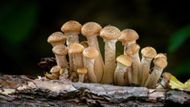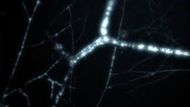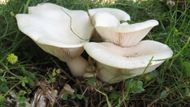On Earth, fungi persist as intriguing and ignored life forms that captivate scientific minds. People rarely notice them in daily activities, yet their exclusive characteristics elicit both admiration and terror. On April 13 (2025), HBO will premiere the 2nd season of the American post-apocalyptic drama television series The Last of Us. The series is based on the Naughty Dog video game franchise and takes place twenty years after a pandemic caused by a widespread fungal infection that transforms its inhabitants into zombie-like beings and brings society to an end.
HBO committed to The Last of Us without hesitation. In a daring show of faith in its artistic vision, the network renewed the series for a 2nd season less than two weeks after its January 2023 launch. Co-creators Craig Mazin and Neil Druckmann, who have long pushed the limits of storytelling, are part of the show's brain trust. Prepare to unravel what can be described as nature's incredible mysteries.
Disclaimer: This article is based on the writer's opinion. Readers' discretion is advised.
The list of 5 fungus facts to blow your mind as you wait for The Last of Us Season 2 is explained below:
5. A giant blue whale

A giant fungus (Armillaria solidipes) is the largest living thing on Earth. It is a single living organism that spreads underground rather than a collection of several mushrooms. Nearly 2,400 acres of land are covered by its fine threads, or mycelium, in Oregon's Blue Mountains. This underground system develops slowly, even though we cannot observe it routinely.
The Last of Us on HBO presents a comparable concept through an enigmatic fungus that transforms the world through unconventional methods. The show reveals how the advancing fungus infiltrates every part as it disrupts life systems, similar to how the actual subterranean giant disrupts its environment.
The TV show version and the real fungus have mysterious aspects of strength hidden in small details. The unseen world has incredible power to alter our environment because hidden things can transform the world into extraordinary shapes.
4. Zombie Fungus

Cordyceps is a parasitic fungus that causes neurological changes in insects and arthropods before death. The fungal growth in its host insect produces bodies that push through the dead tissue, releasing spores to begin another life cycle. Cordyceps is commonly known as the "zombie fungus," even though the scientific community considers this fungus medicinal because traditional Chinese medicine uses specific species for therapeutic purposes.
The Last of Us video games introduce the player to four to six different natural stages of the fungal pathogen Cordyceps. The HBO presentation features just four basic stages as an adaptation from the original multiple stages.
The majority of the Cordyceps fungus variations that appear only in The Last of Us Season 2 have the potential to appear in future TV show seasons. The current season features only four transformations in its sequence.
3. The Glowing Mushrooms

Over 110 fungal species emit dark light using a biological process known as bioluminescence. The bright emission from organisms happens because of luciferin compounds, which also cause fireflies to shine during nighttime. The peculiar glow comes from mushrooms and underground mycelium parts in selective fungal species. The Bleeding Fairy Helmet, scientifically known as Mycena haematopus, emits a glowing light while living in North America, Asia, and Europe.
The light-emitting property of fungi acts as a natural attractor for flying insects that serve as carriers of fungal spores necessary for reproduction. The world shown in The Last of Us falls victim to the mutated Cordyceps fungus that transforms its environment into disturbing sights. Through TV representations of fungal illumination, the show exposes both feared elements and the distribution size of the contagion while highlighting the peculiar nature of fungal bioluminescence in abandoned spaces.
2. The Underground Internet: Mycelial Networks

The wood wide web represents the underground fungal network that connects different plants. Trees and plants are connected by a natural internet made of their mycelium, which are tiny, thread-like strands that extend far into the soil. They can exchange essential messages, water, and nutrients via this network, aiding their survival during difficult times. Moreover, they support one another in silence beneath the soil, working as a team.
The Last of Us Season 2 depicts a threatening fungus that weaves together life forms through unexpected connections. Within its gameplay, the game depicts a harmful plant-life organism that connects people, animals, and vegetation through concealed connections.
What we see in the real underground web exists in nature, where its hidden systems produce powerful and unexpected results. Our world gets its shape through unbelievable forces that exist outside of our direct view. Each concealed thread represents an outstanding natural creation.
1. A Pandora’s box of possibilities

Fungi's secret abilities stand out as remarkable examples of life forms. Natural fungi exist beyond the simple mushroom form because they are complex organisms that generate various crucial chemical products. Fungal strategies are studied because they provide solutions to environmental and health problems. Many drugs derive their compounds from fungal organisms that serve singly as antibiotics against infections and cancer treatment medications.
Fungi participate in waste cleanup by processing dead substances and environmental pollutants across nature's ecosystem. Fungi use bioremediation to restore natural water and soil conditions that are beneficial to plant and animal life. Plants maintain growth along with fungi because they exchange vital nutrients that improve their operational stability. Fungi benefit the ecosystem because of their natural abilities, which have earned them a place as an important natural resource and future exploration ground.
Research on fungal wonders suggests new solutions for medical practices and environmental cleanup. Despite Season 2's predictions of apocalyptic fungal changes, genuine scientific research into fungi demonstrates their immense potential to improve our world.
The hidden capabilities of fungi surpass what beings typically observe as edible mushrooms. Fungi have interesting natural functions, such as assisting trees in communication, producing dark-light signals, and possessing insect-like horror film scenarios. The natural world demonstrates the complex architecture behind life through its unexpected and complex nature. The Last of Us utilizes scientific discoveries about fungal mysteries when blending factual data with fictional elements to create its dreadful storytelling.
Positive fungal potential exists in reality, leading to medical advancements, environmental recovery, and green, sustainable systems. Nature keeps active networks hidden from our view, but they continue to progress.
